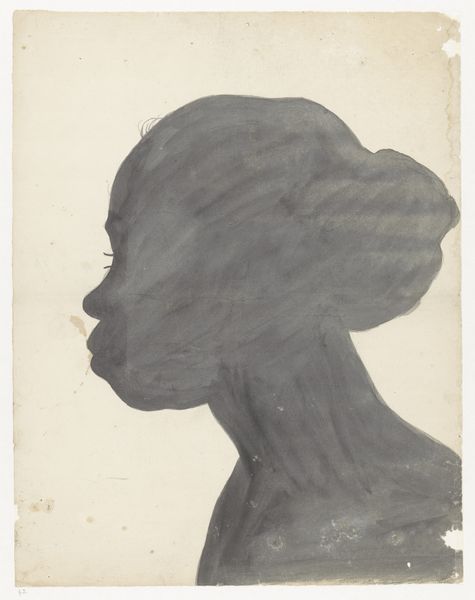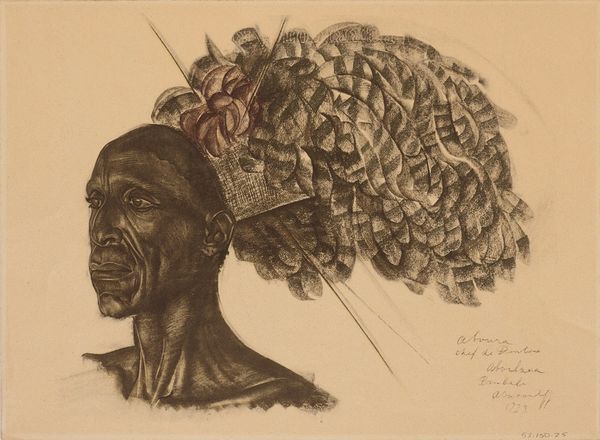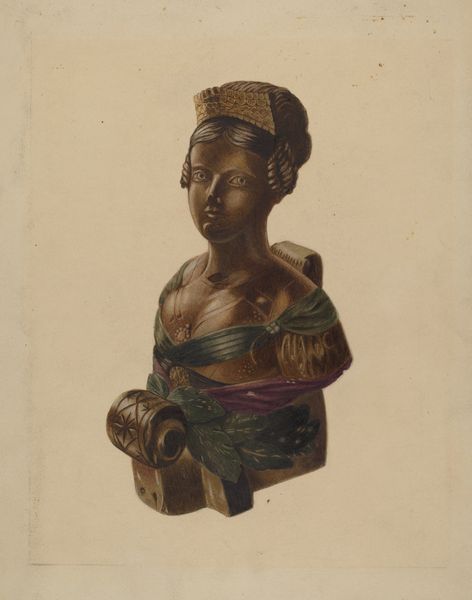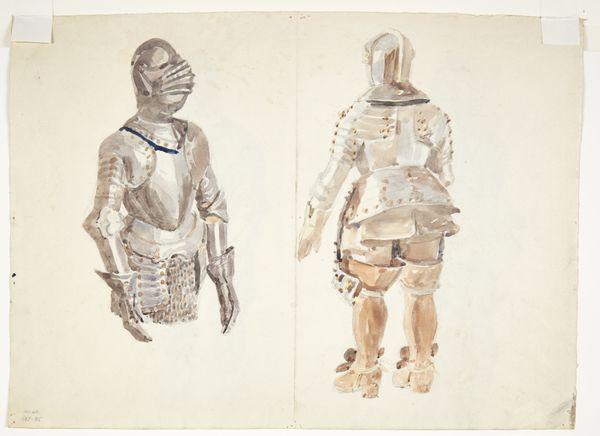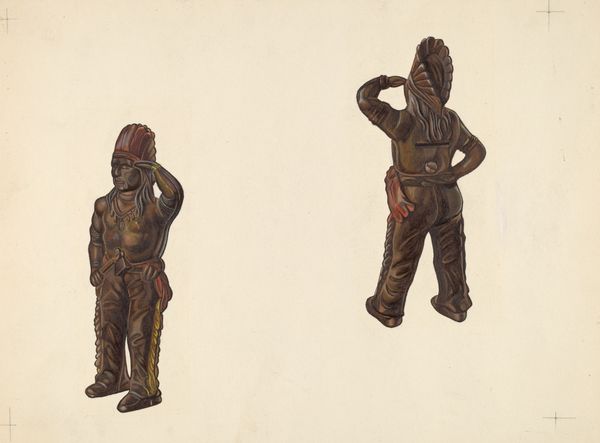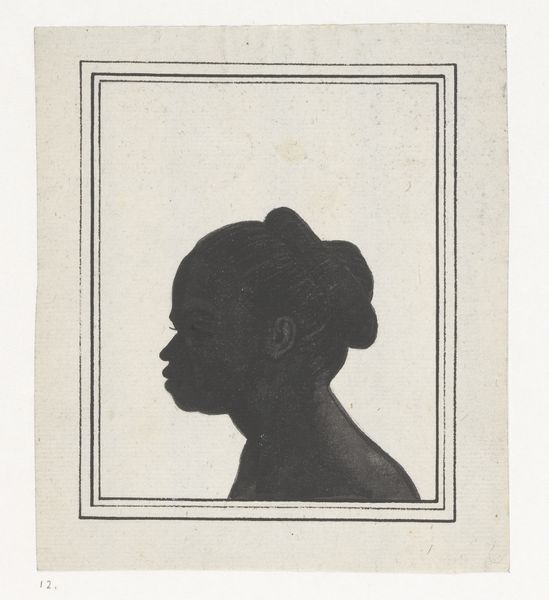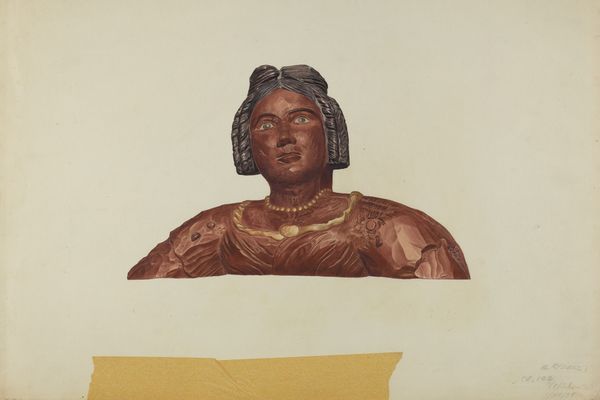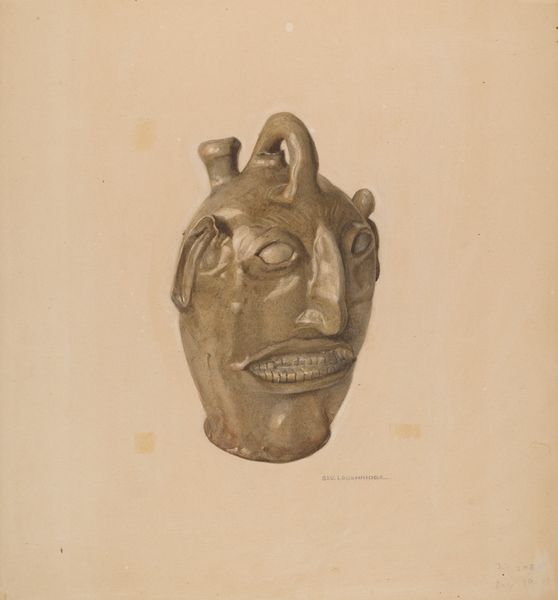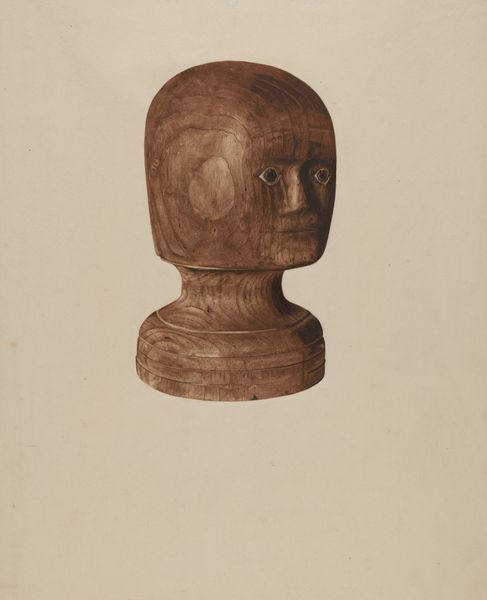
drawing, charcoal
#
portrait
#
drawing
#
caricature
#
caricature
#
charcoal drawing
#
charcoal
Dimensions: overall: 29.5 x 21.2 cm (11 5/8 x 8 3/8 in.) Original IAD Object: 4 1/8" high; 3 1/4" long; 3" wide
Copyright: National Gallery of Art: CC0 1.0
Curator: Here we have Clementine Fossek’s "Double Faced Negro Head Bank," a charcoal drawing created around 1938. What’s your initial take on this, Editor? Editor: Stark. The contrasting tones are immediately striking, casting quite a somber mood despite the almost caricatured expressions. There is a weight to it, formal and material. Curator: Indeed. Fossek's focus on this object really underscores how even mundane, commercially-produced items were laden with racial stereotypes. This drawing emphasizes the circulation of such objects and their impact on culture. Editor: Let's focus on the object. The light catches the metallic surfaces, suggesting the cold, hard reality of the bank itself, rendered meticulously in charcoal. Did she see some significance in this mass produced sculpture, the lines, structure? Curator: Undoubtedly. It represents a significant part of the consumer landscape where black people were reduced to caricatures and commercial assets. She’s spotlighting the ways such dehumanizing imagery became commonplace. Editor: I observe a very strong sense of depth. There's a careful build-up of shadow and light that brings a sense of form to the subject, while the perspective from different views is intriguing. I find the formal approach here technically sophisticated, how it invites us into an aesthetic assessment despite the drawing being an artwork depicting a dark stereotype. Curator: Exactly. Fossek's drawing allows us to confront these issues head-on by documenting it and demanding we reflect on their implications. Consider the implications on work, exploitation of racist imagery and production cycles perpetuating stereotypes. Editor: Considering it technically, though. The artist handles the texture and light to such a level that the eye is pulled into a dance of forms, compelling even when considering such heavy context. It brings attention to an overlooked artistry in handling material depiction. Curator: Agreed. Ultimately, the image offers us a glimpse into the production, dissemination, and acceptance of harmful stereotypes, reminding us to think about objects, history and exploitation in American culture. Editor: And how through art, form becomes inextricably tied to context.
Comments
No comments
Be the first to comment and join the conversation on the ultimate creative platform.
